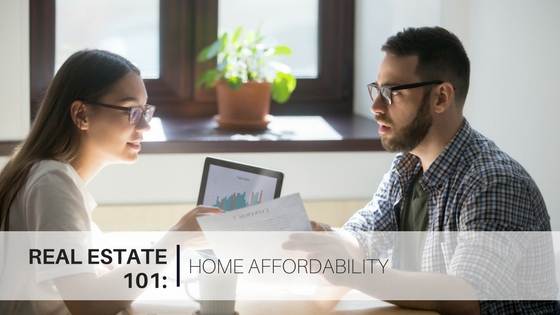
Before you start browsing real estate listings, do you know how much home you can afford? It’s important to determine a realistic buying budget before looking for a new home. The biggest mistake homebuyers can make is buying more than they can comfortably afford on a new home.
Your financial lender will be able to determine how much you can afford based on a few factors including your income, debt expenses, and the amount of your down payment.
Here’s how lenders use these factors to determine your affordability:
Income and debts
Lenders review your gross income (this is the amount before taxes and deductions are taken out) and your monthly expenses, including any debt payments like car payments, personal or student loan debt, or credit card debt.
Property taxes
This is adjusted based on the state and county you’re purchasing in and is included in the mortgage calculators.
Credit score
The credit score is one of the biggest factors lenders use to determine your affordability. Your interest rate is directly tied to your credit rating, meaning the higher your credit score, the lower your interest rate and monthly payments.
Debt-to-income ratio
Also known as DTI or back-end ratio, this ratio is the percentage of your monthly income that is spent on debt payments, including car payments, personal or student loans, other mortgages, child support and minimum credit card payments. Learn more about the importance of your DTI here.
Front-end ratio
The front-end ratio is the portion of your income that will be used to make mortgage payments. The ratio is calculated by dividing the monthly housing expenses by the monthly gross income. The standard rule is that this ration shouldn’t take up more than 28 to 31% of your income before taxes depending on your loan type.
Note: these standard ratios aren’t carved in stone; each lender may have a range of preferred ratio they are willing to work with.
Down payment
The down payment is the amount of money you will “upfront” to secure a home, with the rest of the purchase amount being funded through the mortgage. Putting down a larger down payment you’re likely need to borrow a smaller amount from the lender, which will decrease your monthly mortgage payments.
Private Mortgage Insurance (PMI)
While a 20% down payment is not required, most lenders require you have mortgage insurance if you put less than 20% down. PMIs protects lenders in case the borrower is unable to payback the loan.
Whatever your affordability level, it’s important to not overload yourself and to leave some financial breathing room. You don’t have to spend the maximum amount your lender has qualified you for.
[…] Real Estate 101: How Much House Can I Afford? – Urban. – · Before you start browsing real estate listings, do you know how much home you can afford? It’s important to determine a realistic buying budget before looking for a new home. The biggest mistake homebuyers can make is buying more than they can comfortably afford on a new home. […]